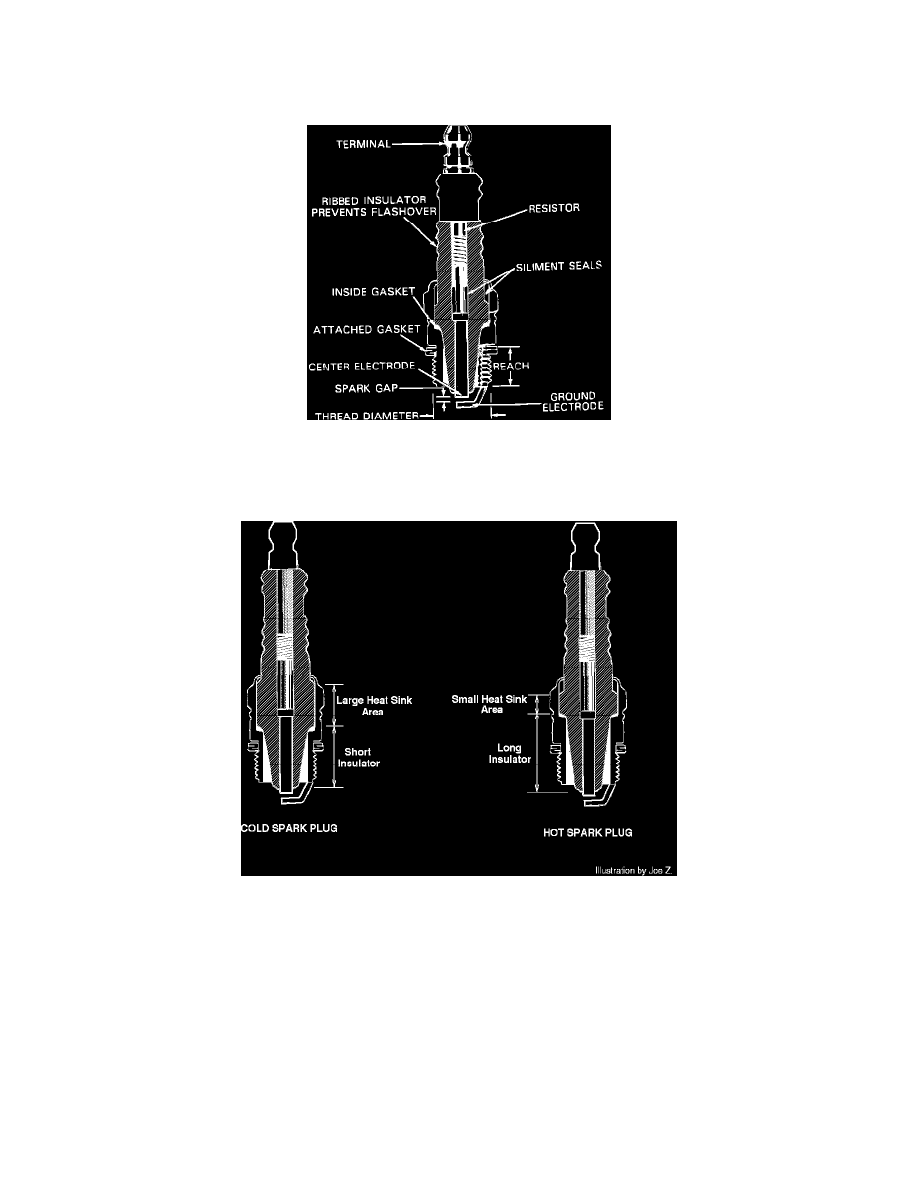Golf III L4-1984cc 2.0L SOHC (1993)

Spark Plug: Description and Operation
The spark plugs (one per cylinder) protrude into the combustion chambers and provide the spark that ignites the compressed air/fuel mixture. The spark
plug is located in the cylinder head. There are many different types of spark plugs for the many different applications and each type has specific
advantages for its applications. Different features include:
Typical Spark Plug Construction
1.
THREAD SIZE - The diameter and pitch of the threaded portion of the spark plug.
2.
REACH - The length of the threaded portion and how far the electrode protrudes into the combustion chamber.
Spark Plug Heat Range Illustrated
3.
HEAT RANGE - The ability of the spark plug to cool its electrodes.
a. Hot plugs have longer insulators around the center electrode and less cross-sectional area for heat to transfer from the electrode to the
cylinder head. Heat is conducted away from the center electrode more slowly and the electrode tip stays at a higher operating temperature.
b. Cold plugs have shorter insulators around the center electrode and a larger cross-sectional area for heat to transfer to the cylinder head. Heat
is conducted away from the center electrode quickly and the electrode remains at a cooler operating temperature.
4.
RESISTOR TYPE - Most spark plugs are resistor type plugs. These have a carbon resistor or auxiliary air gap built into them to provide radio
static suppression and to ensure a higher sparking voltage is reached in the secondary ignition circuit before the spark occurs. Resistor type spark
plugs are always used with high energy electronic ignition systems.
5.
NON RESISTOR TYPE - These are rarely used any more due to their poor compatibility with electronic ignition systems. Spark plugs without
auxiliary resistance built in will allow the coil to discharge at much lower voltages (5K-10K volts) resulting in a weaker (lower energy) spark than
electronic ignitions are capable of. These are used in older breaker point type ignition systems that are not designed to produce the high sparking
voltages required by todays emission controlled gasoline engines.
6.
PLATINUM, SILVER OR PALLADIUM PLUGS - Some spark plugs have center electrodes coated with or made of special alloy metals to
